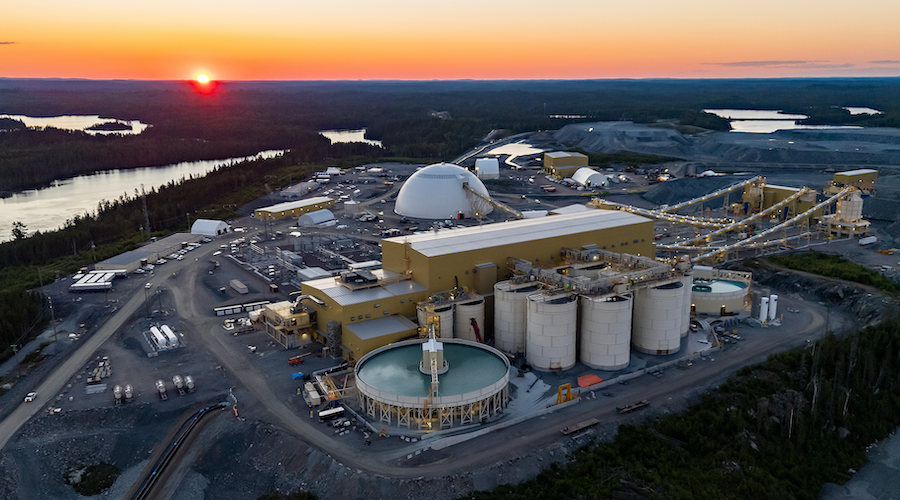Tin’s bright electric future poses supply problem

The electric vehicle (EV) revolution has galvanised battery metals such as lithium, cobalt and nickel – and now the tiny tin market is becoming aware that it, too, might be a beneficiary.
The International Tin Association (ITA) has just released a report on the use of tin in lithium-ion batteries. The headline takeaway is that this additional use beyond soldering and packaging could generate a demand surge of up to 60,000 tonnes a year by 2030.
That may not sound like much, but it would represent a significant increase from last year’s global usage of about 360,000 tonnes.
Additional use beyond soldering and packaging could generate a demand surge of up to 60,000 tonnes a year by 2030
There could be more to come. A piece of research by the Massachusetts Institute of Technology (MIT) projected that tin could be the metal with most to gain, relative to market size, from a broader technology revolution that extends beyond EVs to robotics and the so-called internet of things by virtue of its use in soldering.
It’s likely to be a slow-burn story. Which is just as well because tin’s current supply chain doesn’t look capable of generating that much metal.
No metal in London
The London tin market has just gone one through one of its periodic time-spread spasms.
Exceedingly low stocks registered with the London Metal Exchange (LME), at only 975 tonnes in late January, meant this came as no big surprise.
The cash premium over three-month metal spiked to $211 a tonne at one stage last month.
The tightness has drawn some metal into the system, but much of it again seems to be heading for the “out” door.
Headline LME stocks are currently 1,295 tonnes, down 735 tonnes from the start of the year despite recent arrivals.
It seems only a matter of time before the spreads flare out again. Not that the cash premium has collapsed completely. The cash-to-three-months LME spread closed on Wednesday at a backwardation of $45 a tonne.
Backwardation, when cash commands a premium over future prices, has become the norm in the London tin market. This is partly down to the LME contract’s low liquidity, but also to the absence of any obvious stock overhang.
LME tin stocks were 27,000 tonnes at the start of the decade and as high as 40,000 tonnes in 2002.
Short-term relief for the metal-starved London market is coming from China, where visible stocks on the Shanghai Futures Exchange (ShFE) are a healthier 8,660 tonnes.
China’s exports of refined tin surged to a decade high of 1,200 tonnes in January as arbitrage with London encouraged exporters.
Rise and fall of Myanmar
China, however, is facing its own supply problem.
For the past five years Chinese smelters have been feasting on the raw material coming over the border from the Wa region of Myanmar. But production in Myanmar appears to be in structural decline as easily accessible ore is exhausted.
China’s imports of tin concentrates, the vast majority of which come from Myanmar, fell by 25 percent last year. The only reason they didn’t fall harder was because of a stocks drawdown at the Wa mines, according to the ITA.
Myanmar was the big supply surprise in the past decade and it played a major role in alleviating fears of chronic undersupply in the tin market.
If Myanmar supply is now waning, Chinese smelters will have to reconfirgure their sourcing chain.
Indonesia volatility
While the world’s largest producer faces a reconfiguration of its supply chain, the world’s largest exporter, Indonesia, continues to hold supply hostage to internal politics.
A years-long campaign to control the country’s independent producers has dovetailed with resource nationalism to steadily tighten export regulations.
The string of new export rules have disrupted shipments in the past and they are doing so again now. Exports have been sliding since an October suspension of one of the survey companies used to check that exports conform to the long official tick list.
That suspension has just been lifted. Exports should bounce back accordingly, just as they have done after similar interruptions in the past.
The history of Indonesian tin policy, however, suggests that there will almost certainly be periods of future disruption.
More fundamentally, it’s clear that production itself is running at lower levels than a few years ago.
Last year’s exports totalled 76,760 tonnes, down from 78,190 tonnes in 2017. As recently as 2013 Indonesia was regularly exporting more than 90,000 tonnes every year, with the official count supplemented by a grey flow of illegal exports.
Those free-wheeling days are over and national output seems to have settled at a lower 70,000-80,000 tonne annual range.
Future challenge
Beyond China and Indonesia, other established tin producers, such as Brazil and Peru, have been working hard simply to maintain production levels as mines age and grades decline.
There are a handful of new players, such as Aus Tin , which started production in Tasmania in 2016, and Alphamin, which is converting the Bisie mine in the Congo from artisinal to commercial operation.
The Kivu region of Congo could be the next Myanmar in terms of tin supply, but it’s in a particularly unstable part of the country, meaning that Alphamin is a pioneer and Bisie the poster child for future investment.
Tin’s project pipeline is thin. The market exists on the periphery of the investment radar and hasn’t garnered the same attention as the likes of cobalt.
But if the ITA is only half right in its assessment of potential future demand growth, that will have to change.
And it will necessitate a higher price.
Tin’s project pipeline is thin. The market exists on the periphery of the investment radar and hasn’t garnered the same attention as the likes of cobalt
LME three-month tin is trading at about $21,435 a tonne, just below the $22,000 level that has defined the upper band of the trading range since 2015.
It may struggle to do much more on the upside, given the broader macro negativity hanging over the LME metals complex and the ITA’s own assessment that tin usage could contract slightly this year because of slowing Chinese demand.
However, at some stage the price will have to move to a level to encourage efforts to lift supply. Without that, tin will struggle to live up to its future promise.
(By Andy Home, Editing by David Goodman)
{{ commodity.name }}
{{ post.title }}
{{ post.date }}




Comments